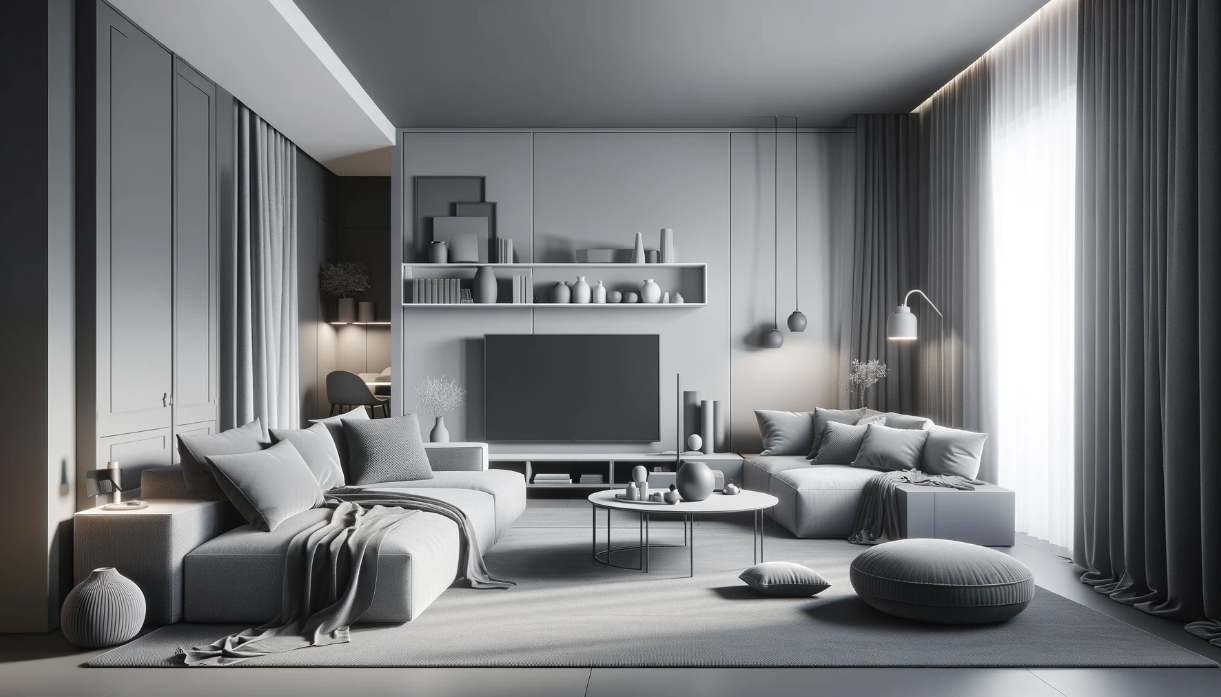Two years ago, the launch of artificial intelligence tools like Midjourney and ChatGPT—capable of generating shockingly good images and text on command—stunned the world. Soon to follow was a rush of startups hoping to cash in. By early 2023, there were AI-powered companies that could design logos, make headshots, help you fight parking tickets, and, of course, design your home.
These home design apps—Interior AI was the first of many—were initially miraculous, but not particularly useful. Yes, when given a picture of a room, they could produce something that looked like interior design. But in the process, they would often distort the space beyond recognition and fill it with imaginary furniture. Public interest in AI led millions of users to try these tools, but it was hard to imagine any one of them replacing a single human designer. A year later, the big question: Have they gotten any better?
There certainly are more of them. Even twelve months ago, it was possible to count the number of AI-powered design apps on your fingers, and try them all in an afternoon. Now the field is hopelessly crowded. There are at least four apps with the name “Remodel AI” alone.
It would take a full week to test all of these sites, but you don’t really have to. There is a kind of sameness to AI-powered design tools, as they’re all driven by the same underlying technology. An automotive analogy: A small handful of AI giants like OpenAI and Midjourney make engines, while a crowded field of smaller startups make the cars. You can come up with different shapes for the frame or paint the exterior different colors, but put them on the highway, and they’ll all go about the same speed.
Sameness doesn’t mean stagnation, and some progress has been made over the past year. Among the common issues shared by the very first AI design apps was the propensity to warp the architectural dimensions of the room—the “envelope” problem. That has been radically improved. You wouldn’t rely on them for shop drawings, but the tools have gotten much better at detecting and preserving floors, walls and ceilings.
The second big knock on these platforms was that you couldn’t fine-tune designs. Ask one to change the color of a fabric, and you were likely to get back an entirely new room—a byproduct of AI’s struggle with what’s known as “disentanglement,” or the ability to recognize an image’s distinct components. This issue has gotten a little better.
For example, sites like Palazzo and Reimagine Home have developed tools that allow the user to highlight specific elements of a room—a sofa, a single sconce—and regenerate it with a different prompt. The fact that this functionality works at all is impressive, but the devil is in the details. When I used Palazzo to try and replace the sofa in a room, it kept isolating individual cushions as opposed to the whole piece. Reimagine Home allowed me to select a single chair, but replaced it with a weirdly stunted, distorted piece that looked more like abstract sculpture than something you could sit on.
The hurdle that none of these sites seems to have tackled is real product. They can fill a room with new stuff, but it’s all imaginary—every chair is the algorithmic average of thousands of chairs that the model has been trained on—and thus there’s no click-to-buy ability. Sites like Collov and Wayfair’s Decorify automatically scan their AI-generated rooms and offer look-alike product, but the functionality is only so-so (table lamps are often confused for chandeliers, coffee tables for ottomans).
Last year, the launch of these sites seemed like a giant, somewhat frightening technological leap. Since then, it’s mostly been baby steps. Much of the improvements have to do with marginally better user interfaces, little bells and whistles, and savvier marketing. The basic functionality (and its limitations) remains much the same. If you want a rough idea of what your living room would look like with an “art deco” refresh, these sites can do that very well, and very fast. If you want to make fine-tuned changes, or buy anything you see—well, they’re not so great.
It would be naive to assume progress will stop here. Seemingly every week, companies like OpenAI roll out updates to their models, meaning the sites that use their technology will benefit—as the engines get better, the cars will get faster. But the slow pace of progress over the past 12 months demonstrates that the gulf between “AI that can design rooms” and “using AI instead of a designer” remains a wide one.





























